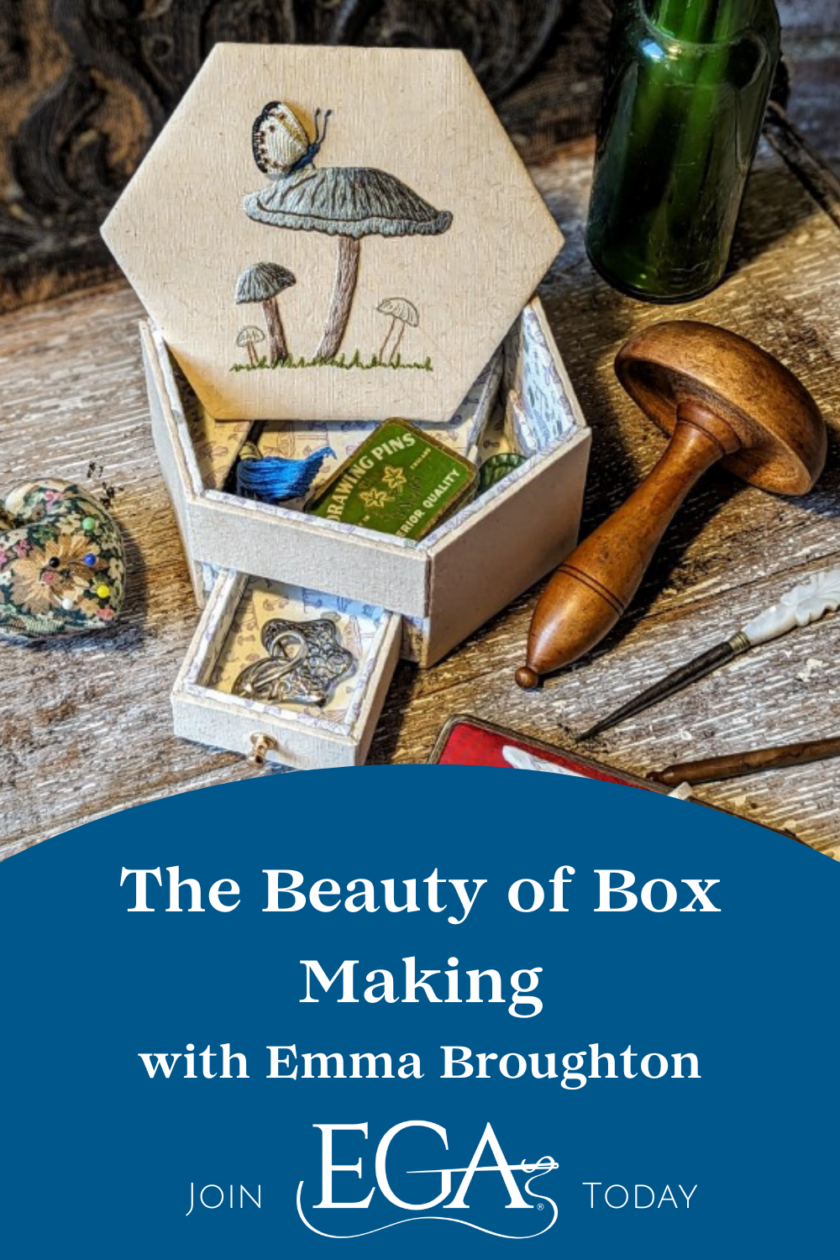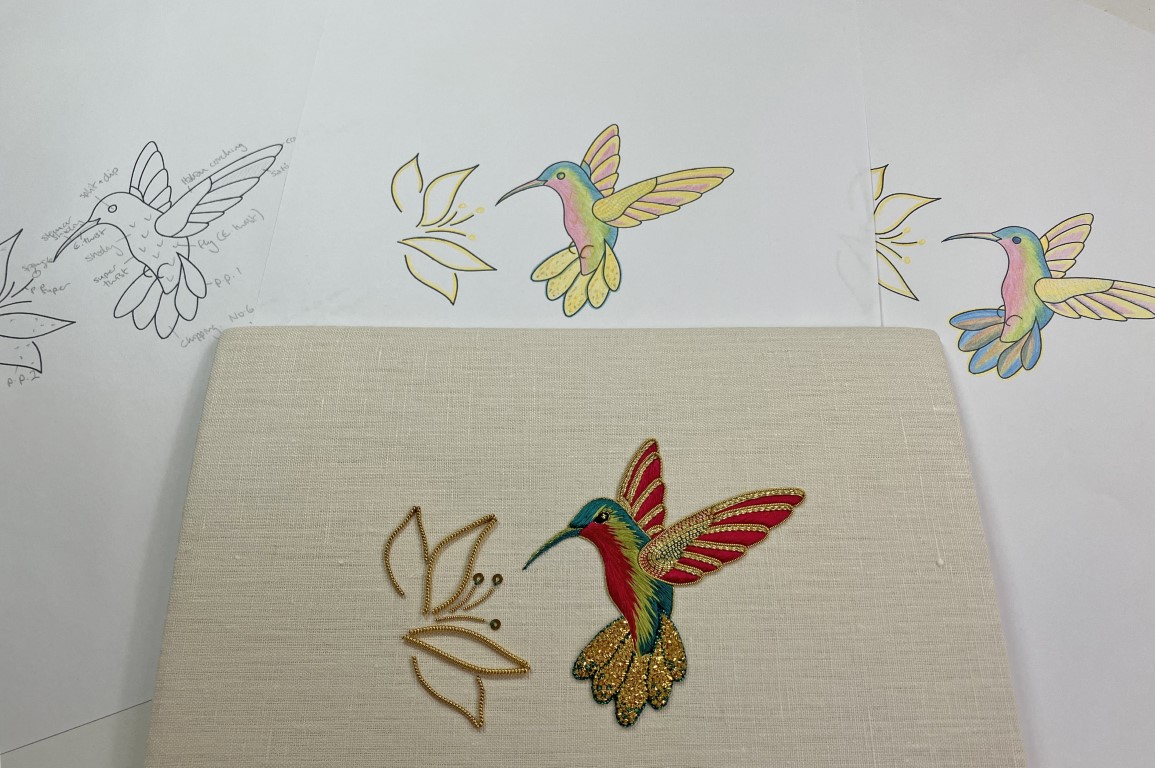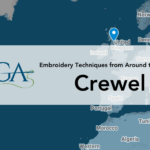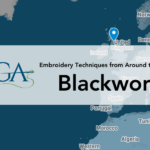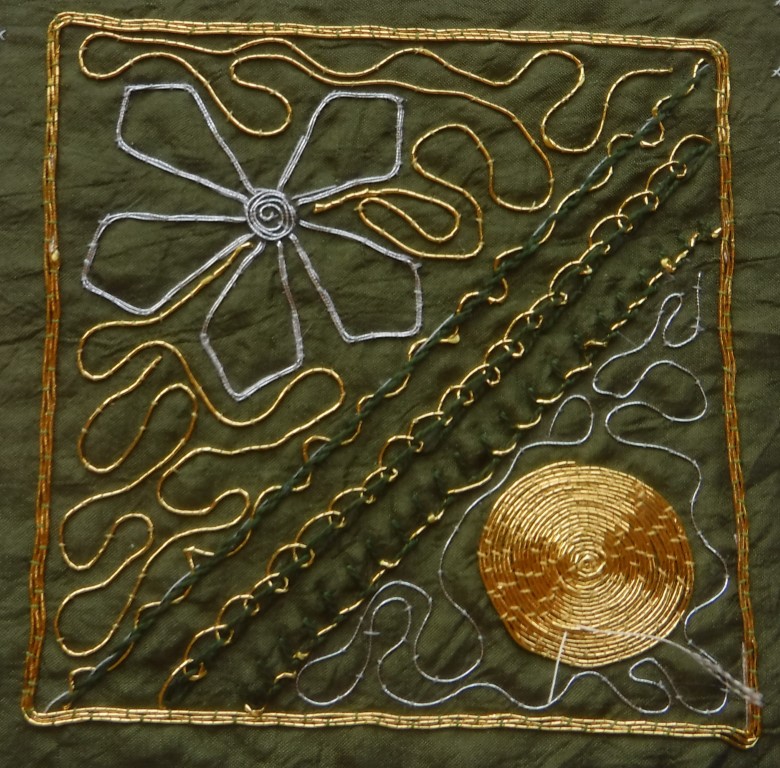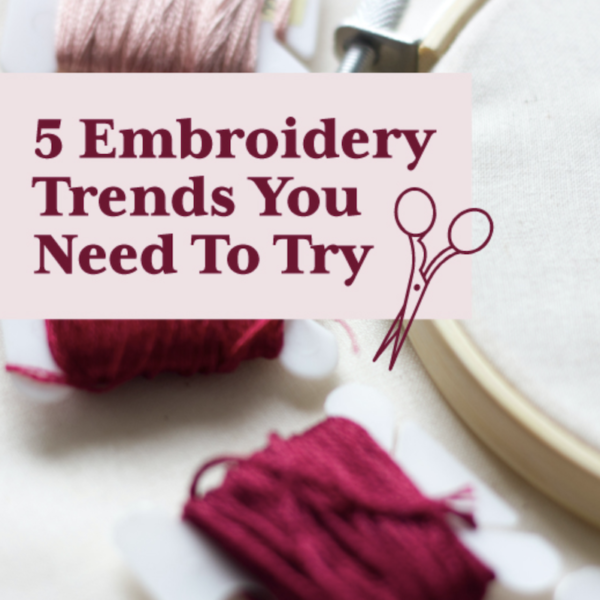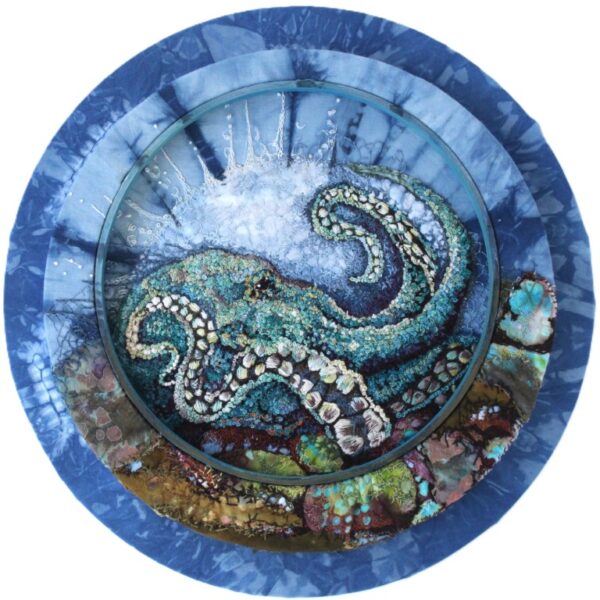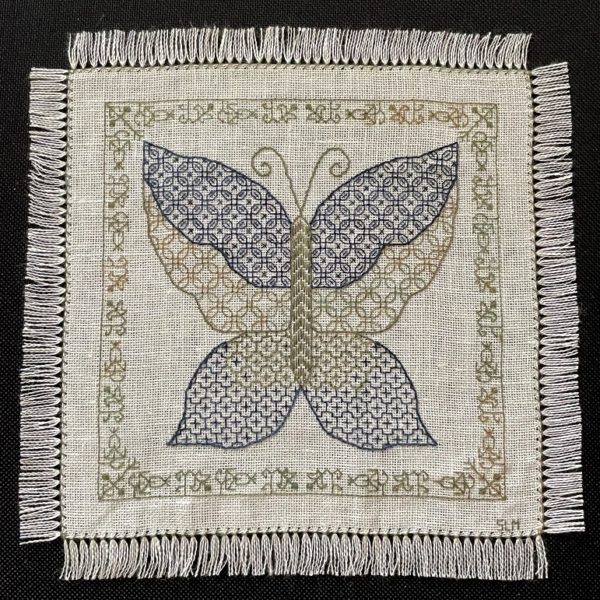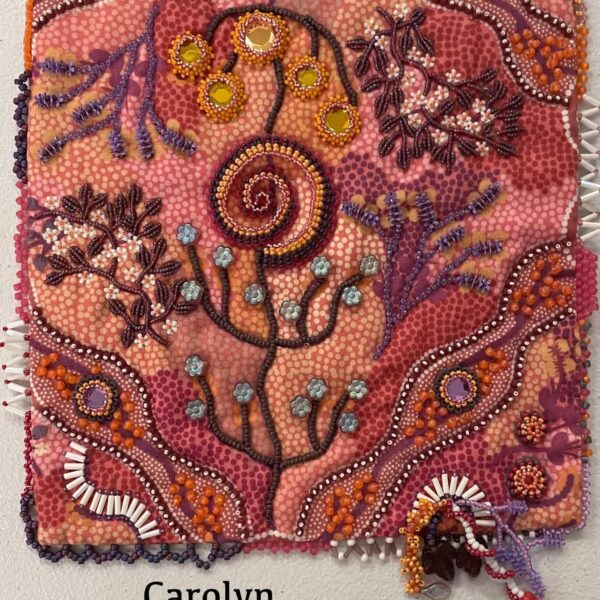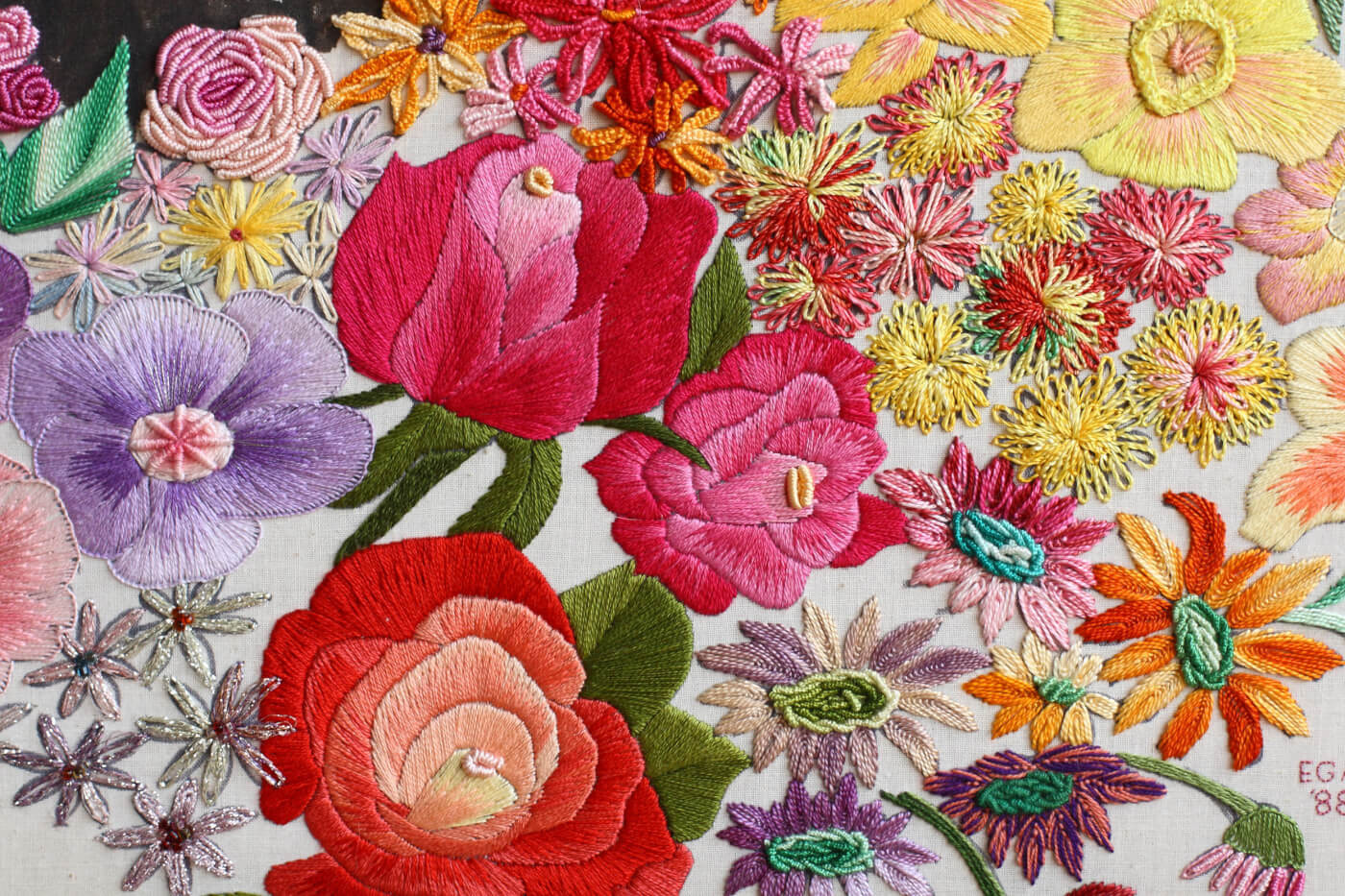Emma Broughton is a Royal School of Needlework graduate and award-winning embroiderer and fabric designer. Her portfolio includes a gorgeous assortment of embroidery techniques, including goldwork, whitework, blackwork, stumpwork, silk shading, and crewel work. However, it is her intricately embroidered, finely detailed 3D boxes that might be the most intriguing examples of her talents. Not only are they ingeniously constructed in a process that requires much trial and error, but they unite all of her different needlework skills into singular, cohesive pieces of art. For example, in her Mushroom Advanced Box Making class, students encountered silk shading, tea dyeing fabric, box making methods, and several different embroidery techniques. We reached out to Emma to learn more about her process and how she creates her elaborate and beautiful designs.
Why are you drawn to box making in particular? What first attracted you to box making?
I love the challenge of creating three-dimensional objects, especially the boxes with multiple elements. Box making was a subject taught during my second year of the apprenticeship programme at the RSN (Royal School of Needlework).
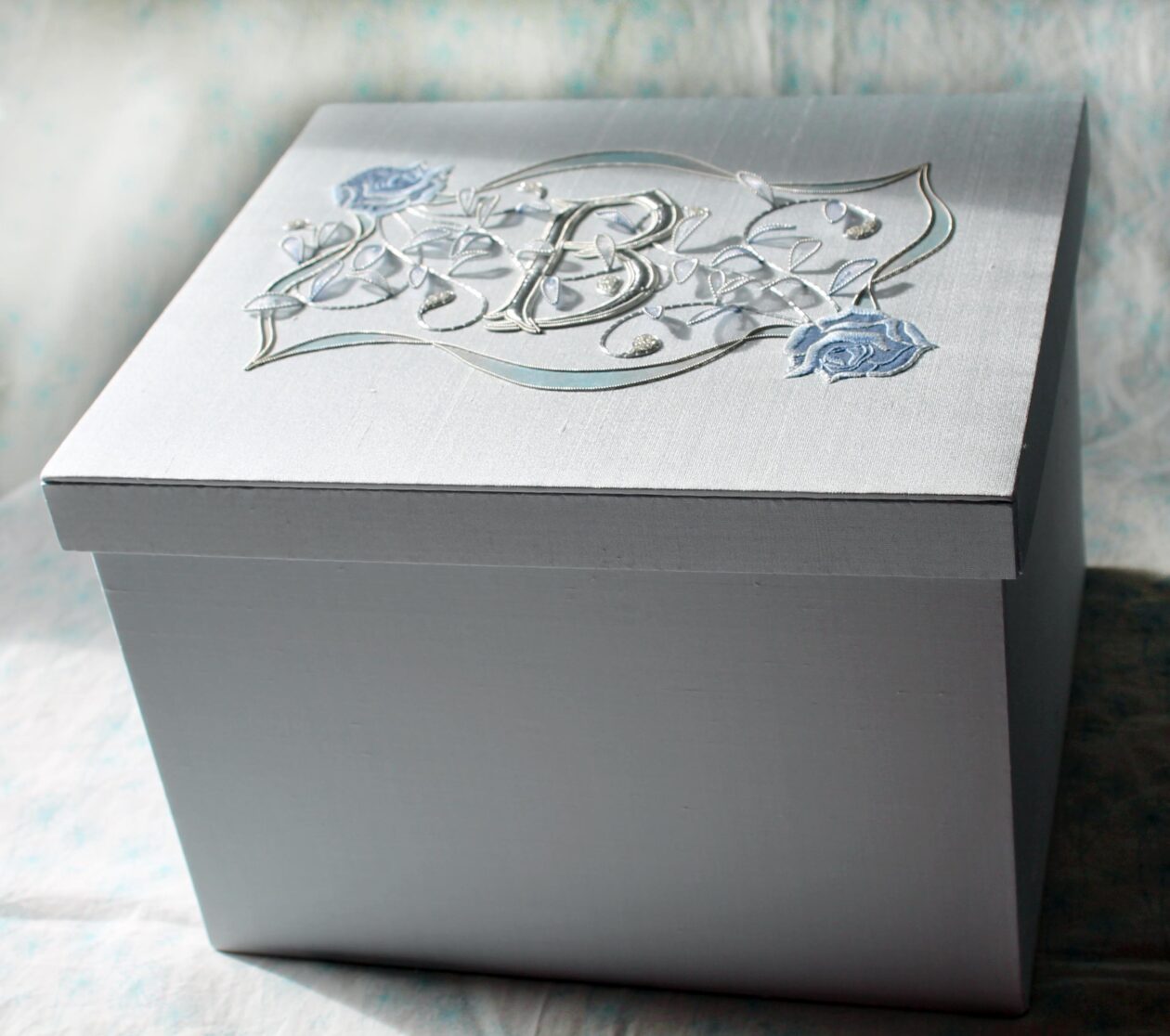
I really enjoyed the challenge of creating a box that had elements that required a lot of planning to work. My box was inspired by one described in the Celtic fantasy book series, the Deverry Cycle, by author Katherine Kerr and contained not one but two lockable lids and a secret compartment in the base.
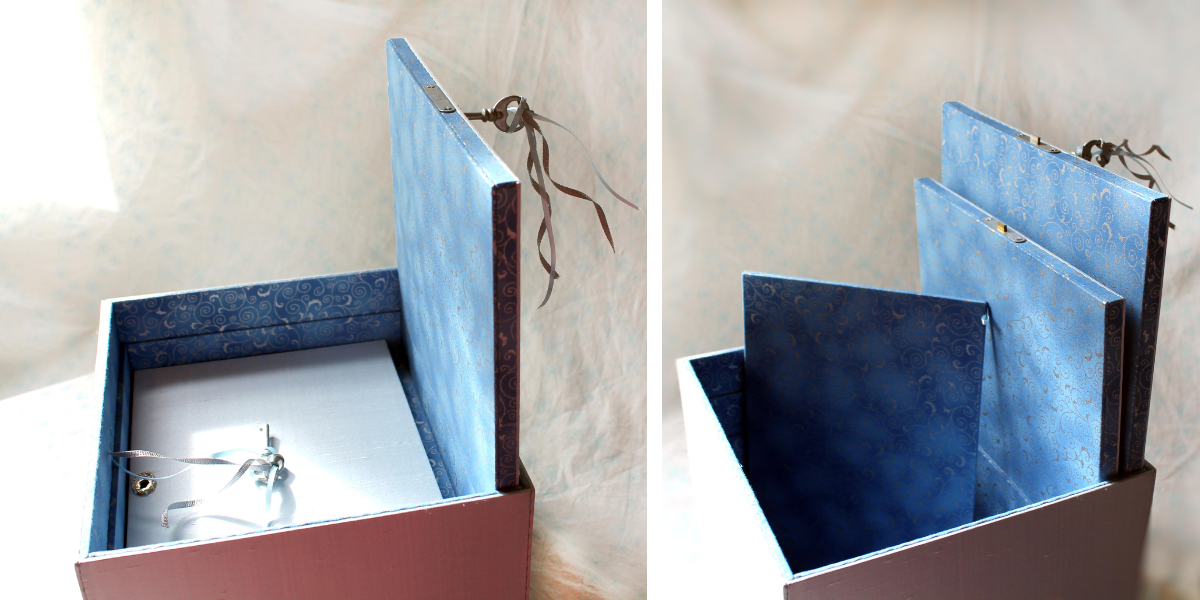
I don’t like taking the easy option, so with a bit of planning with my tutor we managed to not only include two locks but working locks, so each layer can only be opened with a key, the second of which is stored between the two lids.
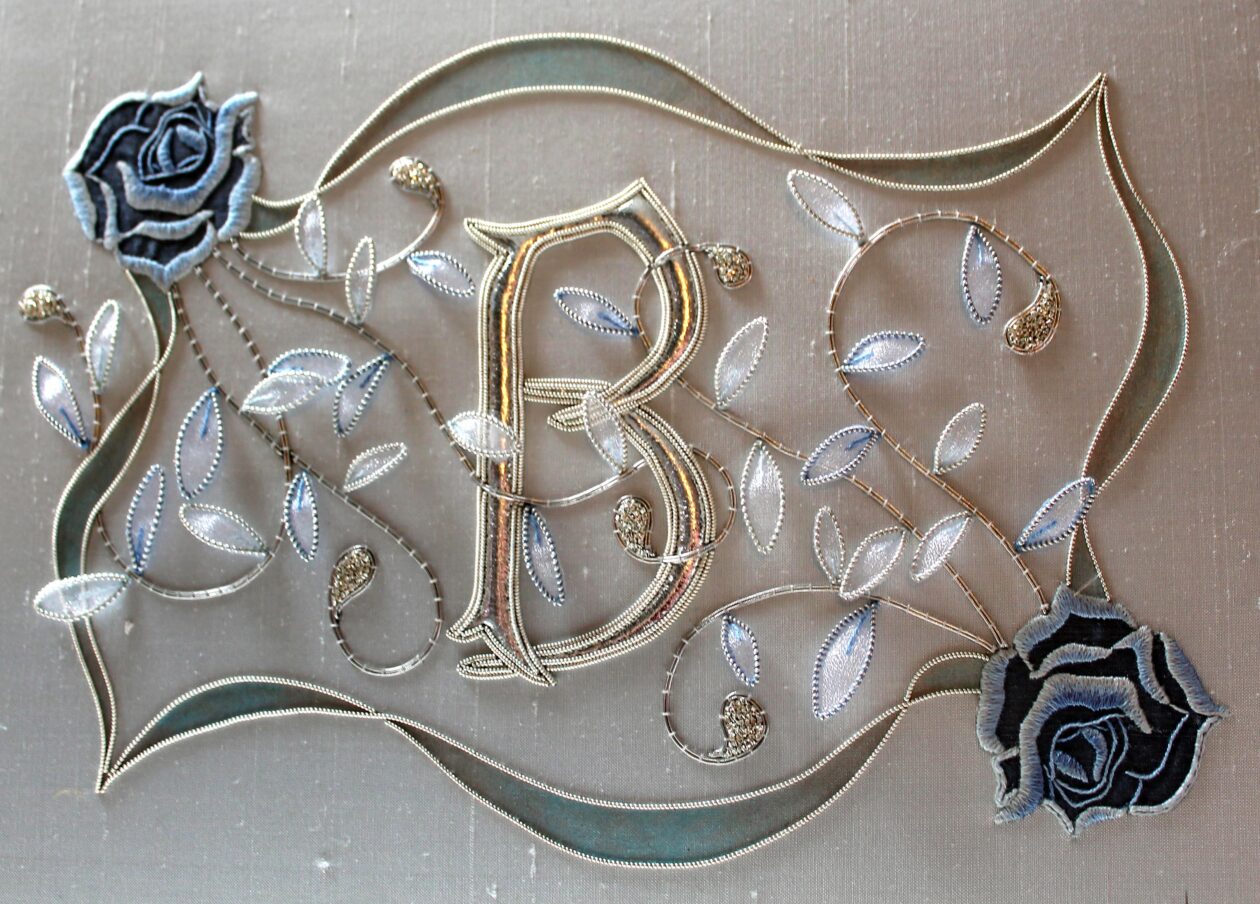
That’s not to say all boxes have to be complicated, I just enjoy the challenge. It’s much easier to put together a box someone else has already worked out and built. So with my courses, I have already worked through all the potential problems. That means you will benefit from my knowledge and tips to give you greater knowledge of box making without the head scratching!
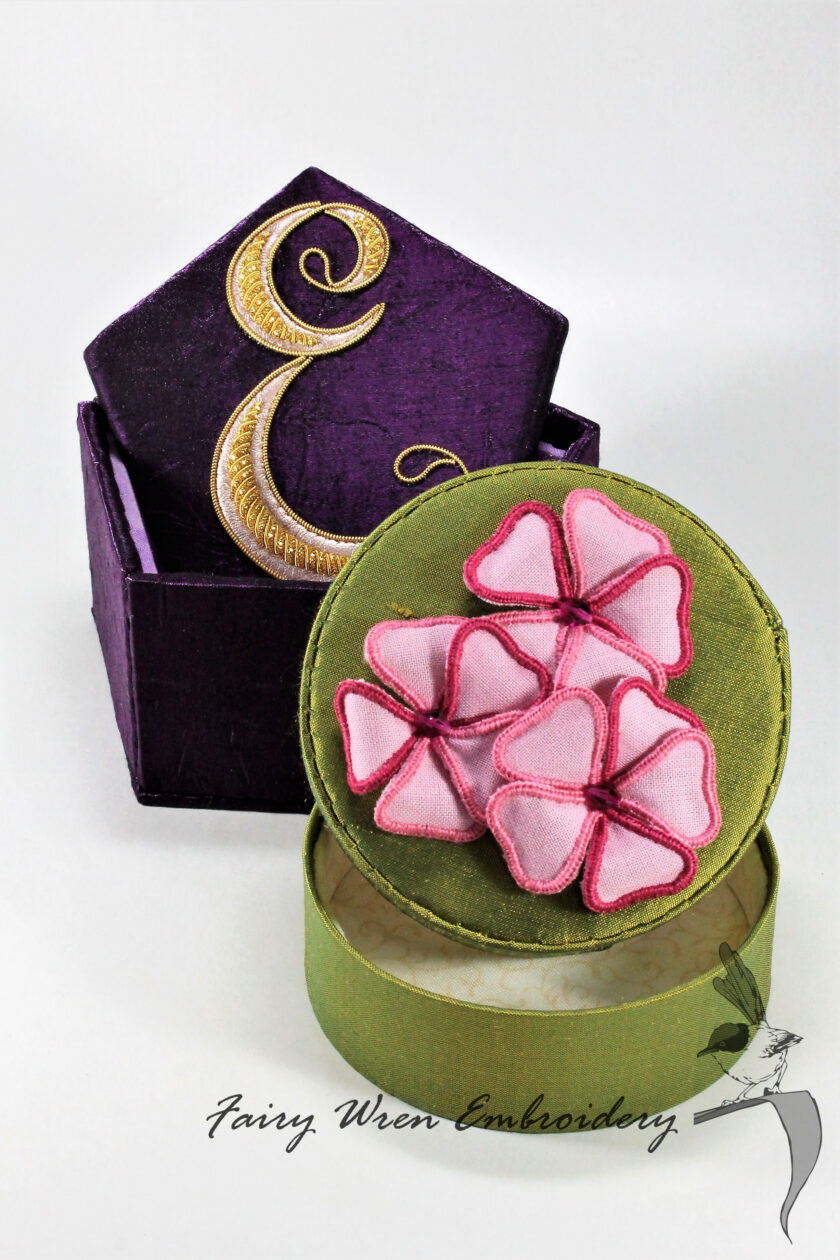
What are your favorite embroidery techniques to pair with box making?
I love them all! But if I really had to choose, it would be between stumpwork and goldwork. Adding the extra raised elements with a touch of sparkle I think just makes the boxes more interesting and noticeable. Using these techniques creates a link back to historical boxes that were created, especially during the reign of Charles I. These stumpwork boxes were made of highly embroidered panels added to wooden box caskets. One such casket is the Edlin Casket which is in the V&A museum, Martha Edlin’s Casket · V&A (vam.ac.uk)
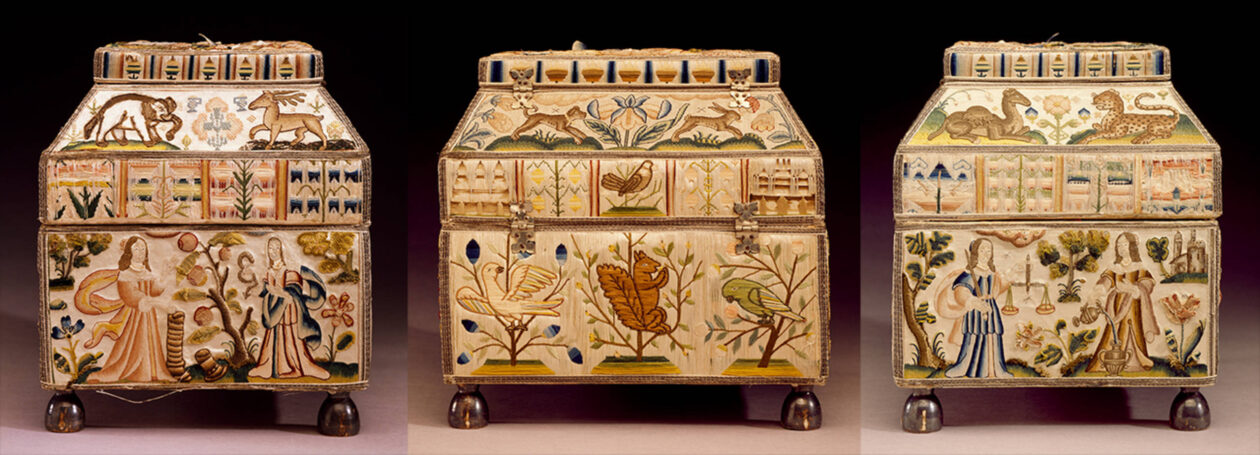
What inspires your box making designs?
Usually my designs tend to be inspired by nature. My art teacher in school introduced me to the beauty of natural forms from artists such as Karl Blossfeldt and Gaudi—it’s a subject that has always inspired me.
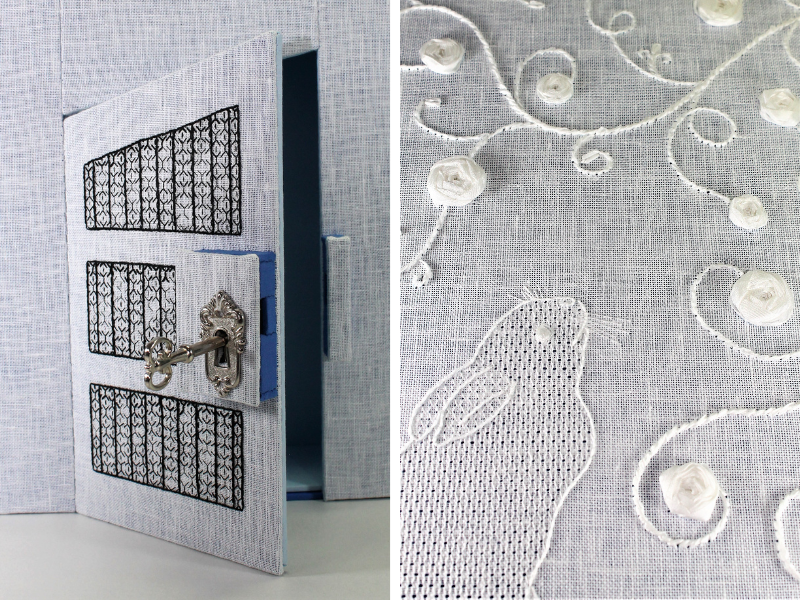
I also take my inspiration from other things that I enjoy such as literature and television. One such example is the Blackwork and whitework box on my book cover which was inspired by the Alice in Wonderland themed wedding from the Year in a Life season of Gilmore Girls.
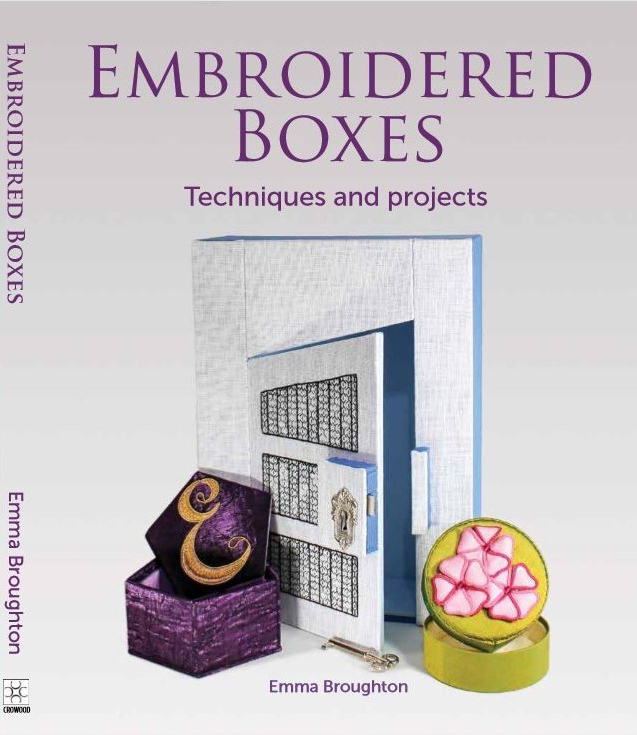
What does your design process look like? Since you’re designing both embroidery patterns as well as the boxes they will adorn, which comes first?
It really depends on each box and embroidery design. Sometimes the embroidery design comes first and the box is designed around it. For instance, with the mushroom design for my upcoming class, this was a design I didn’t end up using in my book. This would have worked well on a square box, but was also perfect for the hexagon shape.
Boxes of a specific shape and dimension, due to internal or other design elements (locks, doors, draws, etc), mean the embroidery design comes second to make the most use of the design area. I always usually allow a small border around the planned design just in case some of the measurements change in the making of the box. No matter how well you plan ahead, the way each fabric works can still vary and therefore the sizing has to be flexible.
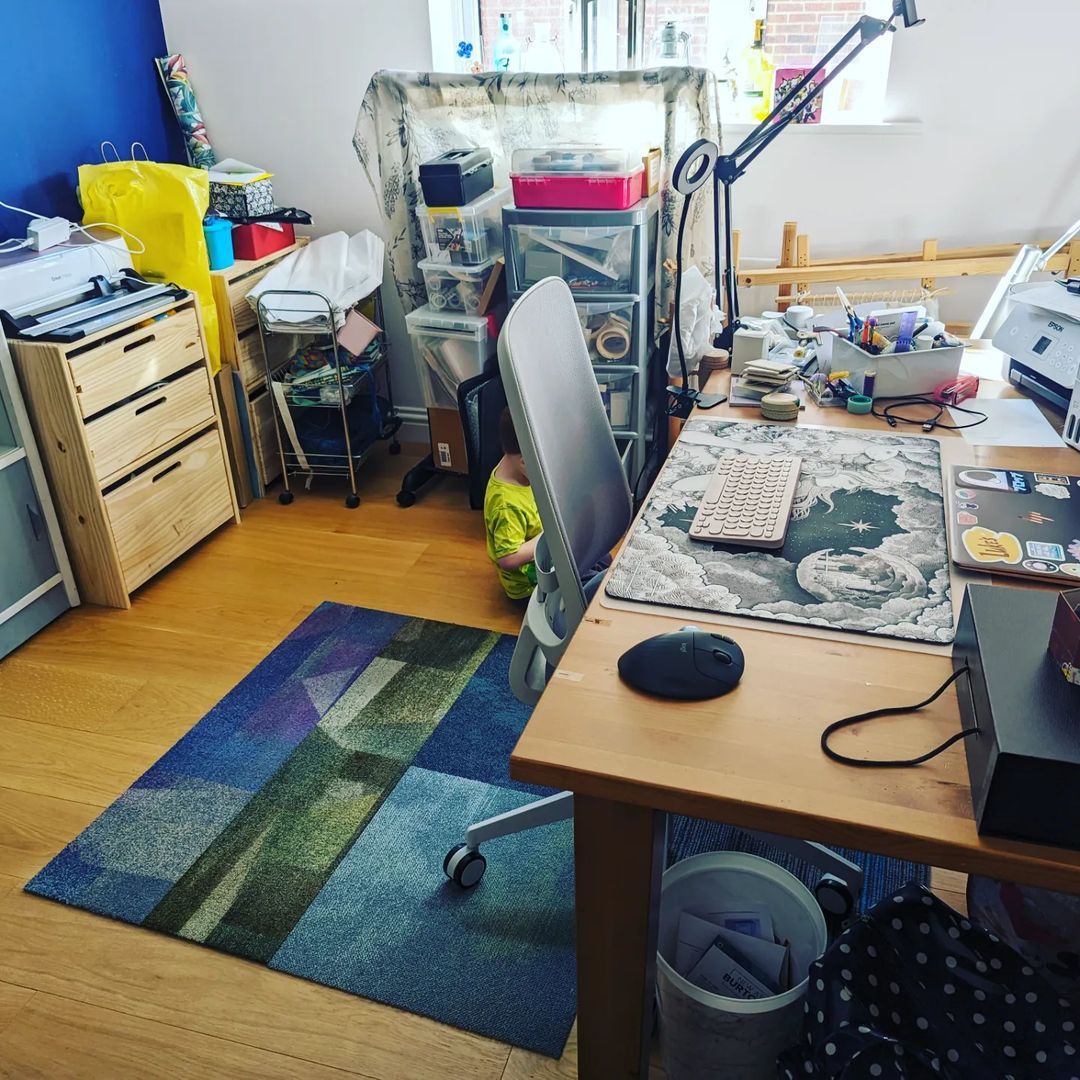
At the moment it’s difficult to work on too many projects at once as I am currently working from my dining room, which despite what you can see from my instagrammable photo (above) is really not big enough (plus half my personal materials, including a lot of beads, are still packed in boxes in the garage).
In the new year I’m lucky because we are converting our double garage into a large studio space for me to work in, so I will have more than double the space to create even more wonderful classes for you all as well as my personal artistic projects.
You designed a fabric just for your Mushroom Advanced Box Making class. What inspired you to create an exclusive fabric?
I also have a background in textile surface design from my degree, so this was something I have done before, but never needed to reproduce at commercial scale. This class gave me the opportunity to put those skills to use to design my own fabric, which not only created an exclusive fabric to match the embroidery on the box but has other advantages too.
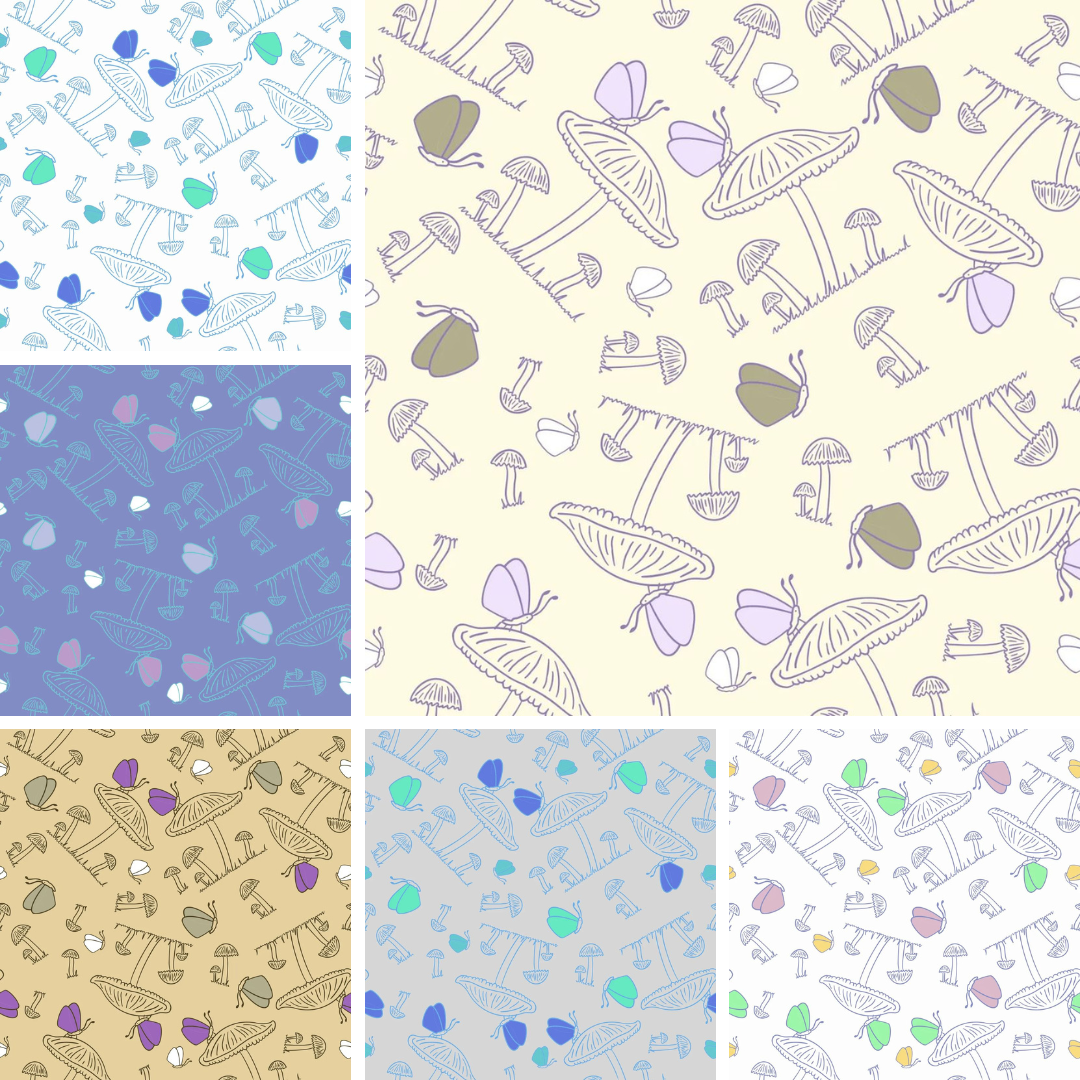
I knew I wanted a small print but I also didn’t want to spend hours looking for one to match the theme. I had to draw the design digitally for the class illustrations, so it didn’t take much extra time to adapt and could be changed with unlimited color options.
There were also more practical reasons. Having previously designed a box using a Christmas blender fabric which is now discontinued, I wanted to guarantee the availability of the fabric given the time period to create a class and then put kits together. I also wanted to ensure that I could purchase the amount of fabric needed given the unknown numbers of students. Using a fabric printing service with a known lead time and being able to order unlimited quantities was very much the best and less stressful option as I do not want to disappoint students with a last minute change.
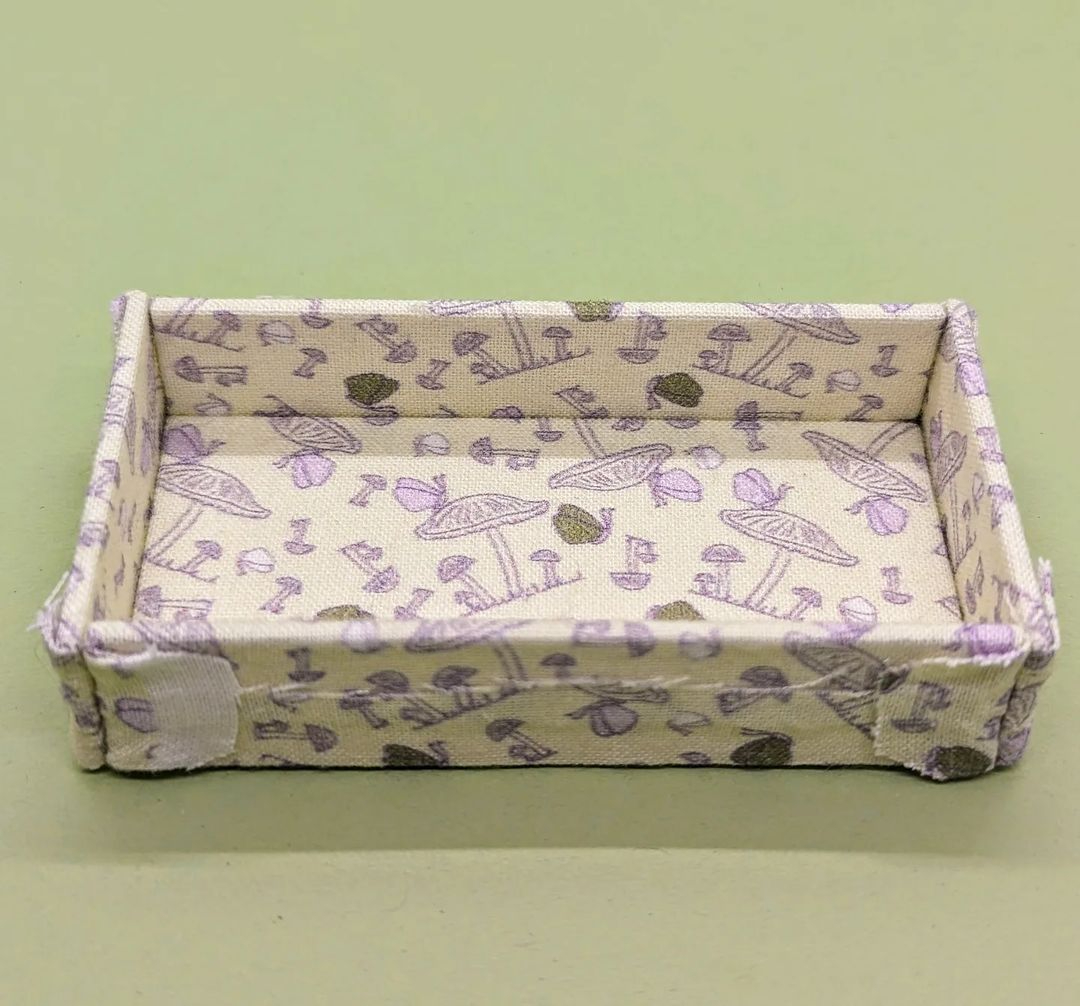
Do you have any favorite tools you can’t live without?
I definitely can’t live without my RSN engraved mellor and my leather thimble! I have had my mellor since my first year at the RSN, so not only does it have a personal significance but it has so many uses. It’s not just for goldwork; it can be useful in so many ways and in every technique. The leather thimble has saved my fingers so many times, especially in box making as the curved needles I use are very sharp. I make the thimbles myself because I don’t like the metal ones as they always fall off. I prefer a tighter fit so making them myself ensures this as well as being usable on different fingers, depending on which finger is needed. The only downside is they can wear through ending in the occasional stab, usually when I least expect it!
I also enjoy many other crafts as well as embroidery and have recently started wood carving. I have made a couple of tools and accessories for myself to use when I’m working on projects, such as a Koma (goldwork tool for holding Jap etc) and a walnut shell pincushion.
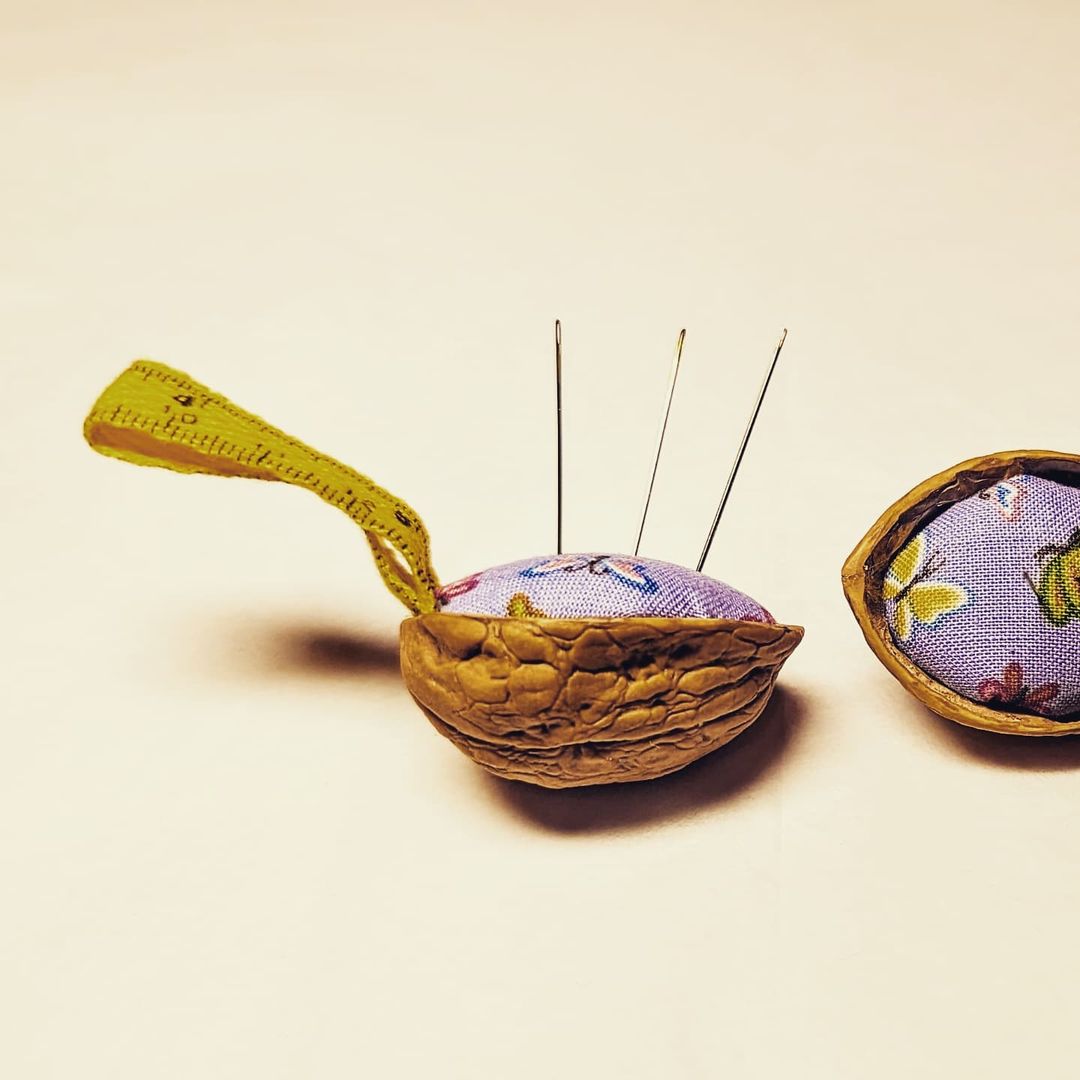
The walnut shell pincushion was so useful for holding the numerous needles I wasn’t currently using when working my silk shaded Fairy Wren (I think I had about 10 needles on the go at one point!). I also made a stiletto out of a small piece of oak. My eldest son planted two acorns in pots which we never expected to grow. Miraculously, they grew, but one was damaged in the heat wave last year. Thankfully, it recovered and I used the dead part to make the stiletto. It is now my favorite and most treasured tool. It works just as well as a metal one.

Do you have a daily/weekly practice that you’d recommend to other embroiderers interested in honing their craft?
I currently have a very limited time with my young family, so I have to fit everything around what works with our schedules. If you only have a small amount of time like me, do the things you love, that inspire you and give you a sense of achievement/fulfillment. If it’s not fun then it’s not worth doing.
One thing that I have tried recently, which isn’t always possible, is to fit in small blocks of stitching around my other work commitments. The Pomodoro method is something that my husband recently introduced me to. This involves setting a time to devote for a specific task, say 1 hour of instruction writing, and then say 5-20 mins stitching depending on what I have time for, and then repeat throughout the day. This allows me to focus better on the main task knowing I can break it up with some stitching I have set up already. It also allows me to chip away at two projects at the same time. Over the working day the 5-20 mins can add up to a substantial amount of time. You could do this with a specific project or even just have a ring frame set up with calico and a selection of coloured threads to experiment with stitches and textures. Anything that adds a bit of creativity into your working day when it’s not possible to just sit and stitch.
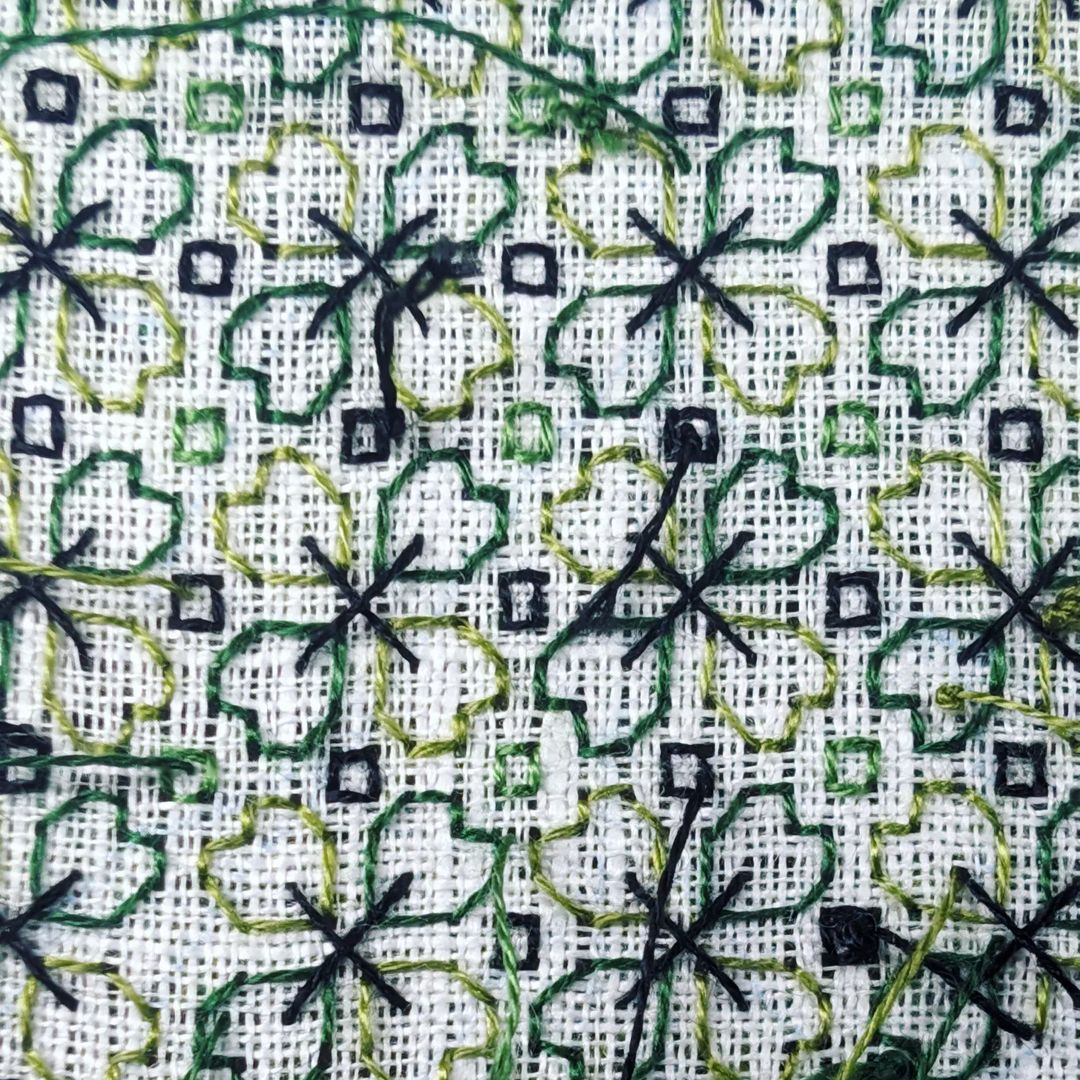
What embroidery, fabric, or color trends (if any) are you drawn to in the new year?
I have always followed my own inspiration, usually from personal experiences and working with colors that I like using, as well as hopefully suiting a wide range of students’ tastes rather than following trends. A class for next year that I’m currently working on was inspired by some foliage collected on one of our daily walks to school. We live in the country and so we are very lucky to be surrounded by nature.
Recently I was lucky enough to have been awarded a grant by the Arts Council England to develop my creative practice over the next year. I am using this to fund a Blackwork embroidered portrait while also experimenting on a more broader basis. This is going to be my main artistic focus for the next year around my teaching commitments.
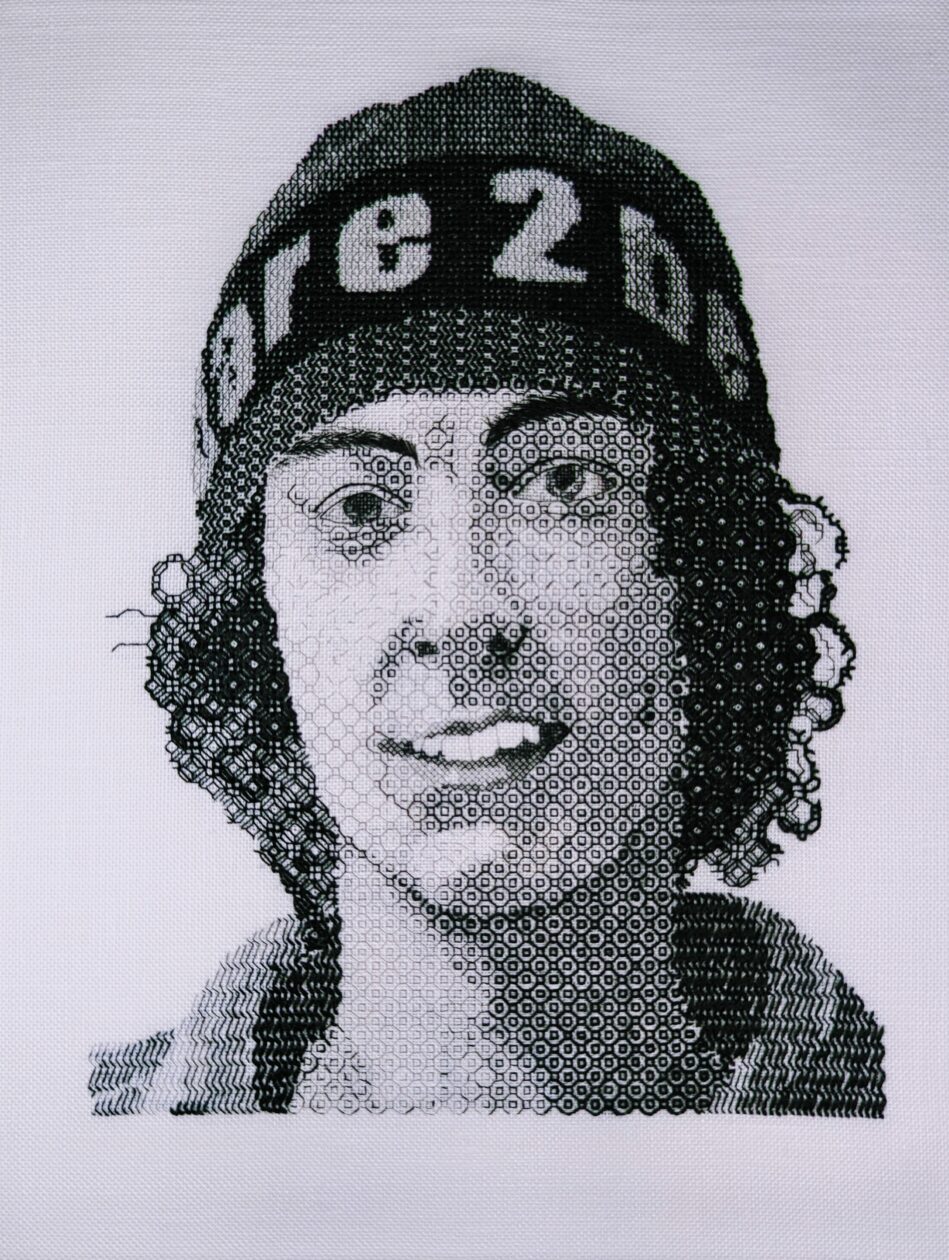
While I am proud of all the pieces I created during my Apprenticeship, one of the main pieces I am especially proud of is my blackwork portrait, which from a distance looks like a drawing/photograph until you get closer. For a while I have wanted to push the boundaries of this technique further than I was able to within my studies. The grant gives me the space to experiment with creating a realistic portrait that also incorporates color to enhance the chosen subject, and experiment with creating visually stunning works that resonate with contemporary society and captivate a wide audience.

What do you hope embroiderers take from your Mushroom Advanced Box Making Class?
I really hope that this class gives students the confidence to work through their own box designs beyond this class. I have worked through all the potential problems with the shape of this box, but as part of the class instructions, I not only give the steps needed, but also explain why I have done things in a certain way. The student should come away with all the tips and tricks that I have learned, not only in the making of this box but from my other work as well. In total, the classes make up over 130 pages of steps, tips, and general information. I will also be on hand throughout the class to answer any questions you should have and offer extra tips if anyone needs help.
Thank you to Emma Broughton for providing a behind-the-scenes look at her process! Register for Online Studio Class: Mushroom Advanced Box Making with Emma Broughton now.
